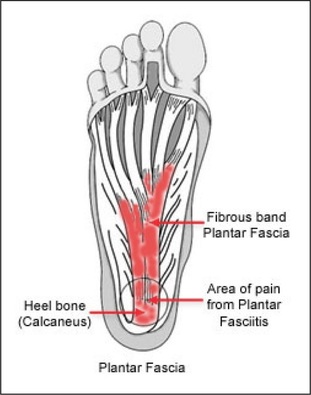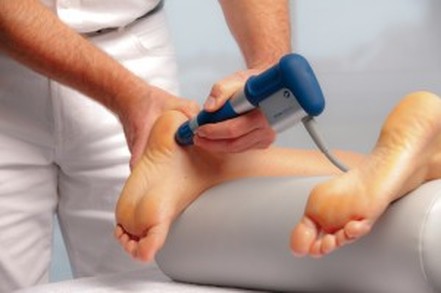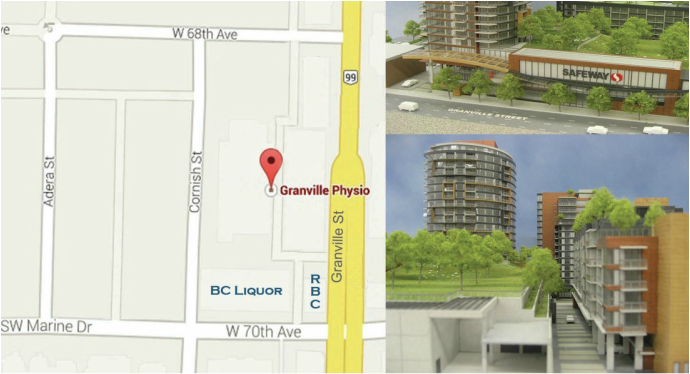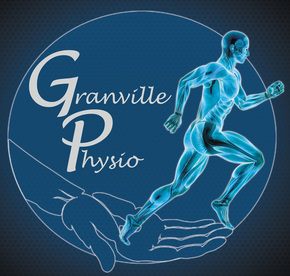Vancouver was deemed the "most walkable city in Canada" this year, and with summer around the corner we'll soon be able to take full advantage of all the gorgeous walking trails and hikes throughout our city.
However, for as many as 1 in 10 Vancouverites, this may not be an option. Approximately 10% of people suffer from plantar fasciitis, a condition which can cause excruciating heel pain from simply standing or walking. While plantar fasciitis can be an extremely debilitating and frustrating problem, Shockwave therapy is a new treatment option that has been showing incredible results and reducing rehabilitation time greatly. So, if you've been struggling with nagging heel pain, don't despair! Read below to learn more about plantar fasciitis, and see how our therapists here at Granville Physio can get you back to hiking your favourite trails, pain free!
What is plantar fasciitis?
| The plantar fascia is the connective tissue that runs along the sole of a foot. It starts at the base of the heel bone (calcaneus), and fans out to connect to each toe. The plantar fascia is very tough, thick, and fibrous, and plays an important role in walking and running. When the plantar fascia becomes inflamed (often due to overuse, improper arch mechanics, and/or tight calf muscles), both the sole of the foot and the heel can become very painful and sensitive. As the fascia becomes more inflamed, the pain and sensitivity also increase. Eventually, the fascia can become so irritated that tiny bone formations can develop within the band of connective tissue, often closest to the heel. |
You have likely heard of these before, by the name of heel spurs. Shockwave therapy is one of the only non-surgical options that is currently effective in treating heel spurs. Without treatment, both the heel spurs and the inflammation can cause longstanding pain and movement issues, with lengthy rehabilitative periods.
What does that feel like?
Pain often starts at the base of the heel, or along the bottom arch of the foot. Many people describe this pain as a bruise or an ache, while chronic conditions have been described as a sharp, jabbing pain. Oftentimes, plantar fasciitis begins as a subtle pain, and many patients dismiss initial symptoms. However, plantar fasciitis worsens over time, and over the span of a few months the pain experienced is usually too great to ignore. Pain is often present the instant that pressure is put on the feet, and can lessen once you begin to move around. However, prolonged periods of activity will cause an increase in the pain and sensitivity experienced.
How do we treat plantar fasciitis?
Except in very extreme cases requiring surgery, most individuals with plantar fasciitis are able to find relief through conservative treatments such as physiotherapy. Notably, stubborn cases of plantar fasciitis have been showing amazing recovery rates from a new technology, Shockwave therapy.
At Granville Physio, we are proud to be able to offer this new treatment option. With an incredible 91% success rate, Shockwave therapy has provided relief to individuals with even chronic plantar fasciitis cases, and has an extensive research basis to support these results.
At Granville Physio, we are proud to be able to offer this new treatment option. With an incredible 91% success rate, Shockwave therapy has provided relief to individuals with even chronic plantar fasciitis cases, and has an extensive research basis to support these results.
What exactly does shockwave do?
To put it simply, the Shockwave machine used by your physiotherapist creates many quick, high energy pulses that are directed into the heel and plantar fascia. These pulses act as a "biological jackhammer", breaking down calcium deposits (heel spurs) and scar tissue. They also stimulate a recruitment of fibroblasts to the area, which are responsible for healing connective tissues like the plantar fascia. Therefore, the healing effects are twofold; not only are the bone spurs and scar tissue reduced, the body's natural healing mechanisms are stimulated to help promote recovery of the foot and heel. Patients have reported an exceptional reduction in pain after only one treatment! If you are interested in reading more about Shockwave therapy, you can visit our website at www.shockwavetherapyvancouver.ca for detailed explanations of the technology behind the machine, as well as the various conditions that it has been shown to treat.
Happy walking!
- Your Granville Physio Team
Happy walking!
- Your Granville Physio Team



 RSS Feed
RSS Feed

